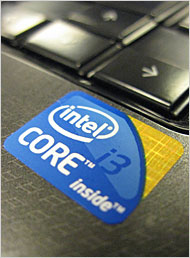How to deal with stickers on laptops

AMD recently announced its initiative to change the situation with annoying colorful stickers that hung laptops in retail chains. After all, often these stickers spoil the appearance of beautiful and elegant devices, the design of which took a lot of effort and money. AMD notes that the situation is similar to the fact that if you were buying a new luxury car, you would have found that all of it is hung with stickers advertising motor oils, car services, air fresheners and wipers.
Everyone has long been accustomed to the fact that on new laptops there is a large number of various stickers. Usually these small pieces of laminated paper tell the customer about the installed software, the technologies and solutions used. Often come across such instances in which all the free space is literally strewn with colorful labels. A person who bought a laptop can easily remove all these colorful stickers, but the result of such an operation does not always look good.
AMD research shows consumers hate these stickers. But the true reason for the appearance of such stickers is the additional earnings by laptop manufacturers from developers of hardware solutions and software. Large companies are willing to pay for additional advertising. HP, for example, even in advertising their own laptops indicates that they look good even hung with ads. On the other hand, the conservative Apple refused to place Intel Inside stickers on their laptops, probably losing a lot of money.
Most likely, money on this type of advertising is not wasted. After all, if you buy a Windows laptop, you already know that you will see Windows on it when you turn it on, and you will find out information about Intel "stuffing" without opening the box.
One argument from manufacturers is that stickers help customers distinguish one laptop from another. But the same information is placed on the packaging. And in general, can the stickers “Windows 7”, “Intel Inside” or “Skype ready” help you make a choice in favor of this or that solution?
AMD promises that in 2011 it will switch to new stickers that are easy to remove and after which there will be no residue. And later, the company will consider the elimination of stickers in general. As part of the program, the company plans to make the placement of stickers optional, and if the manufacturer wants not to place the stickers, AMD will still pay the same money that manufacturers can use to promote it in a different way.
How other manufacturers of components and software will behave, after the announcement of AMD, time will tell. And it’s good if her example is contagious.
